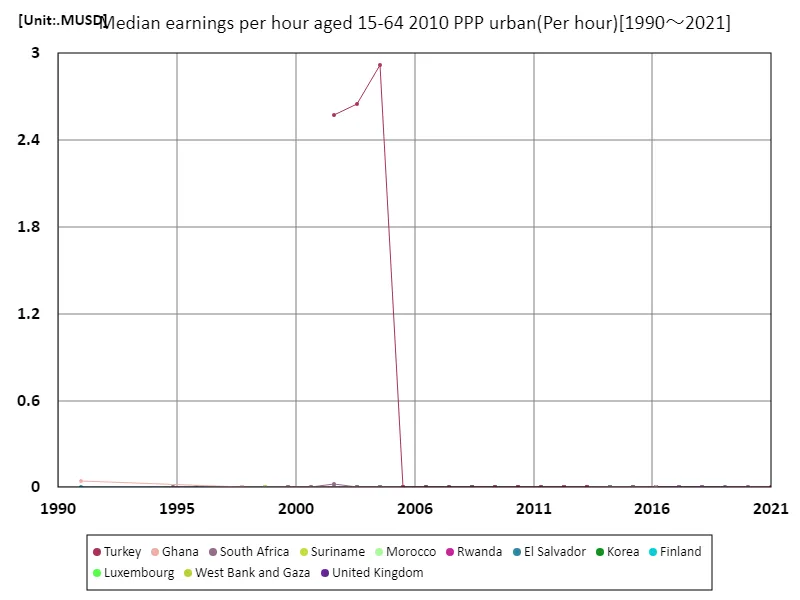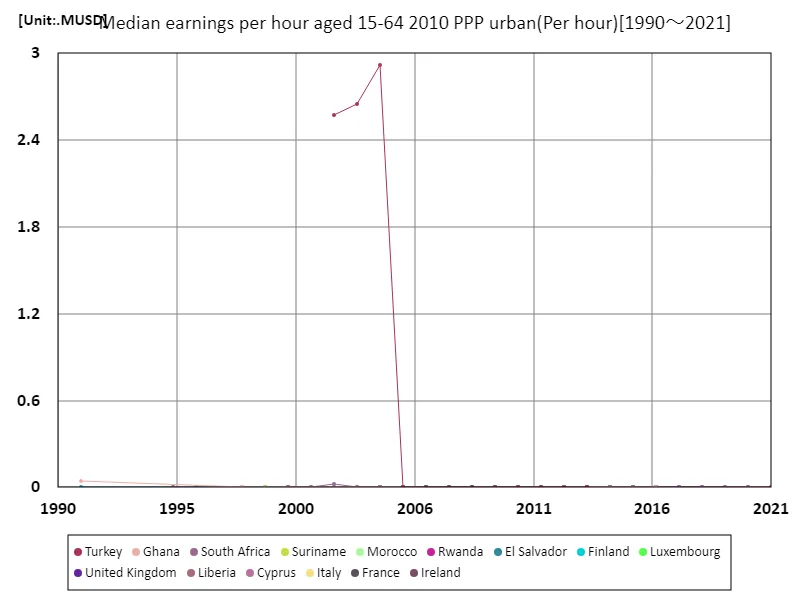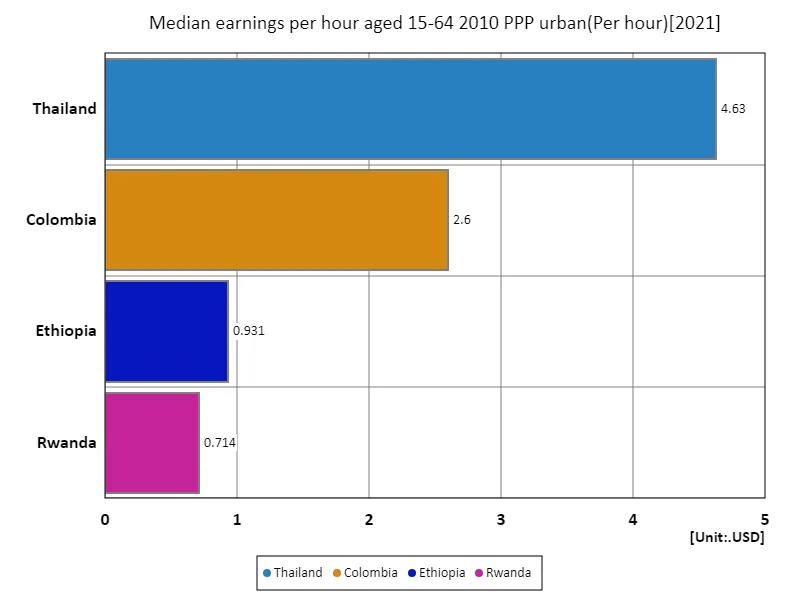Abstract
Employment wages are an important indicator that reflects economic growth and labor market fluctuations. According to 2021 data, Rwanda had the highest average hourly wage at 714 MSD. This trend is thought to reflect the economic development and improved educational standards in African countries in recent years. In recent years, Africa has experienced rapid economic growth, and Rwanda in particular has been successful in implementing policy reforms and attracting foreign capital. This has led to higher wages in the labour market and increased employment opportunities in urban areas. At the same time, issues such as wage disparities and non-regular employment remain, and sustainable growth is required. In addition, compared to developed countries, wages remain low in many countries, and in emerging economies in particular, wages are expected to rise as the economy matures. As digitalization and globalization progress, there will be a demand for the ability to respond flexibly to changes in the labor market. Overall, rising wages indicate healthy economic growth, but more needs to be done to eliminate disparities across regions and industries. It will be necessary to keep a close eye on how the employment environment will change in the future.
Average hourly wage (urban area, 15-64 years old, 2010 purchasing power parity)
Taking into account data from 1991 to 2021, average hourly wages reflect the economic fluctuations and policy influences of each country. Turkey recorded a MUD of 2.92 in 2004, but due to the subsequent economic crisis and political instability, it has now fallen to just 128μ% of its peak. The example of Turkey shows the risks if economic growth is not sustainable. Overall, the wage gap between developed and emerging countries is widening, and emerging countries in particular are experiencing rapid growth while facing challenges in terms of labor market stability. Furthermore, with the progress of economic globalization, although wages in urban areas are on the rise, regional disparities are widening. During this period, particularly in Asian and African countries, progress in education and technological innovation has improved the quality of the workforce and led to rising wages, but there are still many cases where the development of the environment and social security has not kept up. Future economic policies must aim for sustainable growth and focus not only on raising wages but also on improving working conditions.


The maximum is 2.92MUSD[2004] of Turkey, and the current value is about 128μ%
Average hourly wage (urban areas, ages 15-64, 2010 purchasing power parity) (worldwide)
Data on average hourly wages (urban, ages 15-64, 2010 purchasing power parity) from 1991 to 2021 shows the changes in economic conditions and labour markets in each country. In particular, the 2.92 MUSD recorded by Turkey in 2004 represented the peak of the country’s economic growth, but due to the subsequent economic crisis and policy instability, it has now fallen to 128μ% of its peak. The Turkish example highlights the impact that the sustainability of economic growth and social stability have on wages. Overall, wages rose in many countries from the 1990s to the early 2000s, with the spread of education and technological advances contributing to wage increases, particularly in emerging countries. Meanwhile, in developed countries, wage growth has slowed as the economy matures, and the increase in non-regular employment is widening the wage gap. Furthermore, recent data shows that while wages in urban areas are rising, the gap with rural areas is becoming more pronounced. In the future, there will be a demand for improvements in working conditions and enhanced social security, and policies to achieve sustainable economic growth will become important. It is necessary to analyze wage trends from this perspective.


The maximum is 2.92MUSD[2004] of Turkey, and the current value is about 128μ%
Average hourly wage (urban areas, ages 15-64, 2010 purchasing power parity) (nationwide, latest year)
According to 2021 data, the average hourly wage (urban, 15-64 years old, 2010 purchasing power parity) is highest in Thailand at 4.63 USD, followed by an overall average of 2.22 USD and a total of 8.88 USD. These results clearly show the differences in economic development and labor market conditions between regions. Thailand’s high wages are due to the growth of tourism and manufacturing industries, a diversified economy and an improving quality of workforce. In contrast, wages are kept low in other emerging and developing countries, and there is a high level of non-regular employment, especially in agriculture and the service industry, where there is an urgent need to improve working conditions. Additionally, the average hourly wage of USD 2.22 indicates a wage gap with developed countries and reflects the differing effects of globalization across regions. While developed countries are required to offer high wages as well as good working conditions and employee benefits, emerging countries need to promote education and technological innovation in order to achieve the wage increases that accompany economic growth. In the future, policies aimed at sustainable growth will be important in order to eliminate regional wage disparities. In particular, ensuring flexibility and stability in the labor market contributes to the healthy development of the economy as a whole.


The maximum is 4.63USD of Thailand, the average is 2.22USD, and the total is 8.88USD



Comments